Art is my shield in resisting injustice, transforming my life and remedying my trauma. As far back as my memory stretches, I recall a feeling of not fitting in anywhere. I grew up in a society where personal behaviors and individual freedoms were narrowed down to a couple of accepted “ways of being,” forcibly allocated according to physical appearance. Pulling off to a side stream where you are “yourself” often motivated a social outcry and a demand to be brought back under the control of the ruling majority. The options left were either to resist, which is a limiting and costly decision, or to submit and return to the mainstream thereby completely loosing the individual sense of “self”. Making art provided me with the symbols I used to code my thoughts, and helped me to create my own virtual universe where I was the ultimate leader of my being and destiny – an imaginary universe where my voice was neither censored nor restricted.
As a child, my inner universe was decorated with drawings of soulful human beings and animals. However I was quickly indoctrinated through Islamic Religious studies to believe that to depict a living being was to risk eternal damnation. Having the means of safe expression stripped off at an early age created a mixture of repressed emotions that compounded over time, and a hunger to change my reality. For years I was afraid of drawing and I was not able to completely heal this trauma until my late teens. The first credit paid in order gain my freedom was to leave my home in Sudan and plant new roots in Norway where I followed my dream and studied art at the National Academy of the Arts, KHiO.
Silence is dangerous!
Being silent for an extended period of time took its toll on my mental health and my relationship to my “self.” At the art school, I was inspired to tie and tame my thoughts and shape them into visual narratives. This is when my journey towards projects focusing on self-healing and ‘artivism’ began. I speak about my upbringing within the structure of religion and authority. I flirt with themes of depression and tradition, and fight against the demonizing of queer voices. I work with subjects like the murder of protesters in Sudan, my own death, cultural appropriation, bullying and violence. My unique story and lived-experience is the driving force behind my work. I share my art in order to decrease the potential repetition of experiences like mine. I handout my coping mechanisms, tools for self-healing, and methods of expression with an aim to reach out to an age group that my narratives talk about the most, namely children and teenagers.
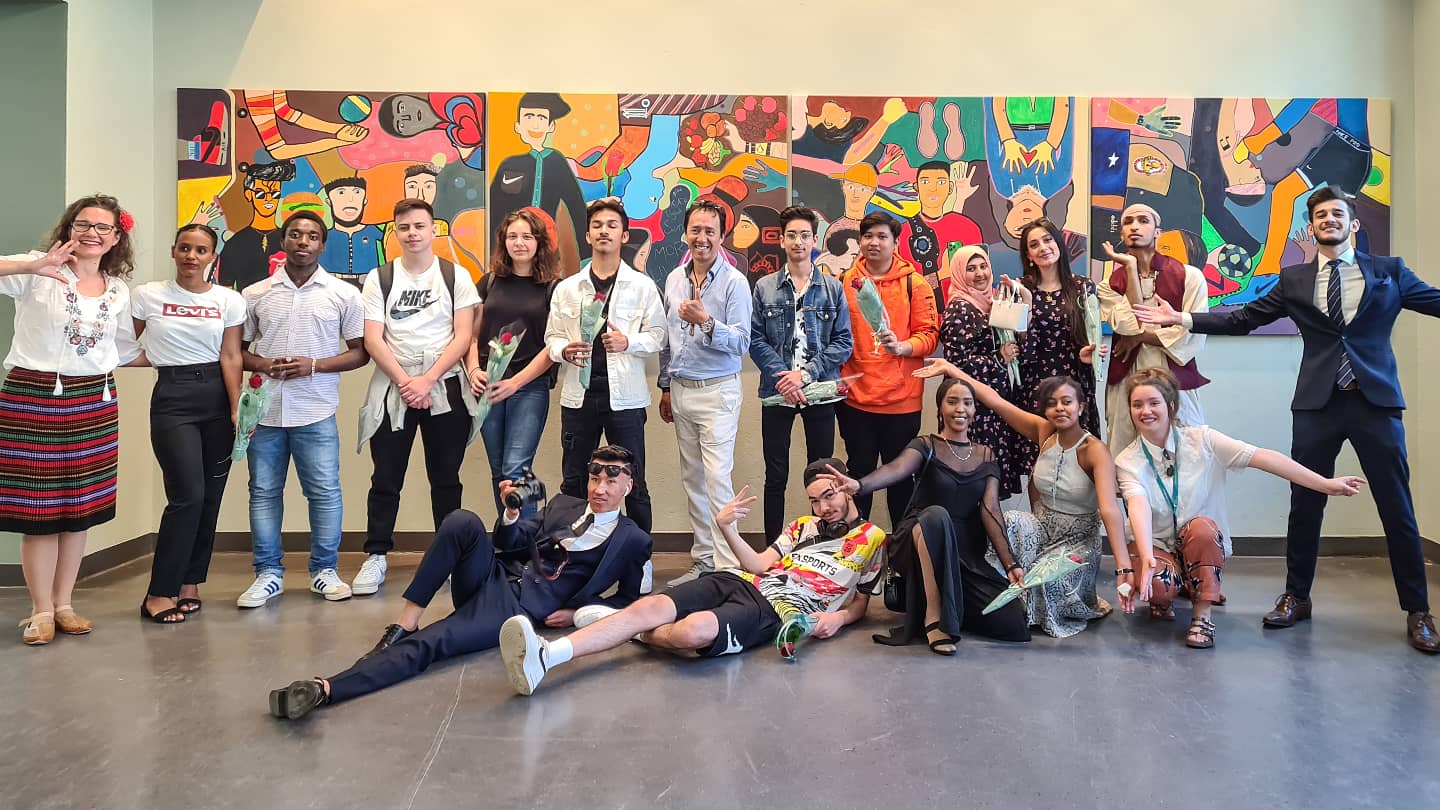
See me from the inside!
In April-May of 2020, while the COVID-19 pandemic mercilessly dominated people’s lives around the globe, my own life and artistic inspiration were likewise affected. All planned exhibitions I had scheduled for the year were postponed to an unknown date or simply cancelled. Galleries shut their doors off and shortly after that, my creative flow followed in shutting down completely. The only creative assignment left in the air was a workshop with students at Hersleb secondary school in Oslo, which was realized with the efforts of courageous teachers and carefully-followed protective measures. I was invited to curate a workshop in which every student would be activated and encouraged to use an artistic method to express themselves. The workshop was titled “This is me from the inside/Dette er meg på innsiden.” The assignment was to work with students who have been living in Norway for less than three years. The students came from a variety of cultural backgrounds and different places around the world. What united us was the fact that we were all from immigrant backgrounds and the Norwegian language was a second or even third language for us.
Each of the students had a story to tell – a story worthy of being heard. My mission was to create a safe space for dialogue and trust, while at the same time, sharing an extra set of tools to assist in the expression of feelings and thoughts when spoken languages fall short. As an immigrant to Norway myself, I well understood the frustration of the spoken-language insufficiency. Talking about emotions and issues that are considered taboo in the culture the person comes from is an added burden. My pedagogical skills were modest, to say the least, since I had not previously worked directly with people in this age group, let alone with such varied backgrounds. What methodology should I follow to reach out effectively to every student – even those who had some preconceived judgment about the way I carry myself and live? How to turn the taunting laughter I overheard after our first meeting into friendship? The approach I took was to slowly build a trust-based relationship that could allow us to land on common ground despite our apparent differences.
I started the workshop with a presentation about different aspects of how I retell my stories through visual language. I categorized the presentation according to themes like dreams and ambitions, using art to advocate for rights, concepts around othering, bullying and my journey towards being comfortable with my own identity. Most of the students had not had a thorough education in art prior to the workshop. Therefore, I opened the door wide for them to pick whatever medium they were attracted to. This freedom came with two conditions; that each student create an individual project in which they were completely free, and to participate in a collective project that could be described as “a mural of memories.” This was a 6×1.2 meter large piece of canvas where everyone was encouraged to document themselves and their time at school through self-portraits or symbols of their interests and dreams.
The students’ final choices of techniques landed between photography, painting and music. Coordinating with the teachers of the two classes I facilitated, we made sure to have a one-on-one conversations with each student about what issues they would like to express, guaranteeing at the same time the respect and discretion for their individual decisions as well as offering any practical assistance needed to bring their ideas forward. The subjects the students chose were very bold and brave. A student photographically presented their personal experience with bullying and name-calling with a self-portrait proudly wearing all the words that had been used to bully them. Another student used painting to emotionally depict the obstacles and struggles they went through during the unsafe crossing of the Mediterranean to reach Norway. Their story spoke of travelling alone as a 16 year old, the destruction of their home, the journey by boat, establishing of a new hope and the pursuit of dreams in a new and foreign society. Other students touched upon important issues such as climate change, racism and familial relationships. They discussed issues that some of the students had not talked about before. The process of reaching a point where they could share these stories was would not have been possible without finding a common ground in the artistic process.
We then arranged an exhibition at the school’s cafeteria and classrooms on the students’ graduation day. The exhibition was a mixture of individual paintings, a large mural, photography and a musical performance made by students who sang in front an audience for the first time. The look of pride on their faces was impossible to ignore, and shown through in their speeches.
This three week long meeting was an insightful and very inspiring journey for both the students and for me. The students and I got the chance to see beyond our expectations of each other. We got to joke, play loud music, dance and experiment with acrylic paints and cameras. At the same time, we were able to lighten some of the psychological burdens by shifting their weight from the shoulders to be hung on a wall. We got vulnerable together, explored our similarities rather than focusing on our differences. I dare to say we got closer as a group. Their recent experiences and my similar past experiences helped us form a group that belonged to each other in some way – the kind of belonging I yearned for when I was their age.
I left this great experience with a sensation that a small torch of hope and trust in art and its ability to enhance our lives had been passed to these students. This torch must be kept lit, protected and invested in by our public institutions and educational programs.
Fact: The workshop experience potentially recruited a future artist, a teenager who ever since the workshop expressed him/herself creatively and is also writing poems – in Norwegian!
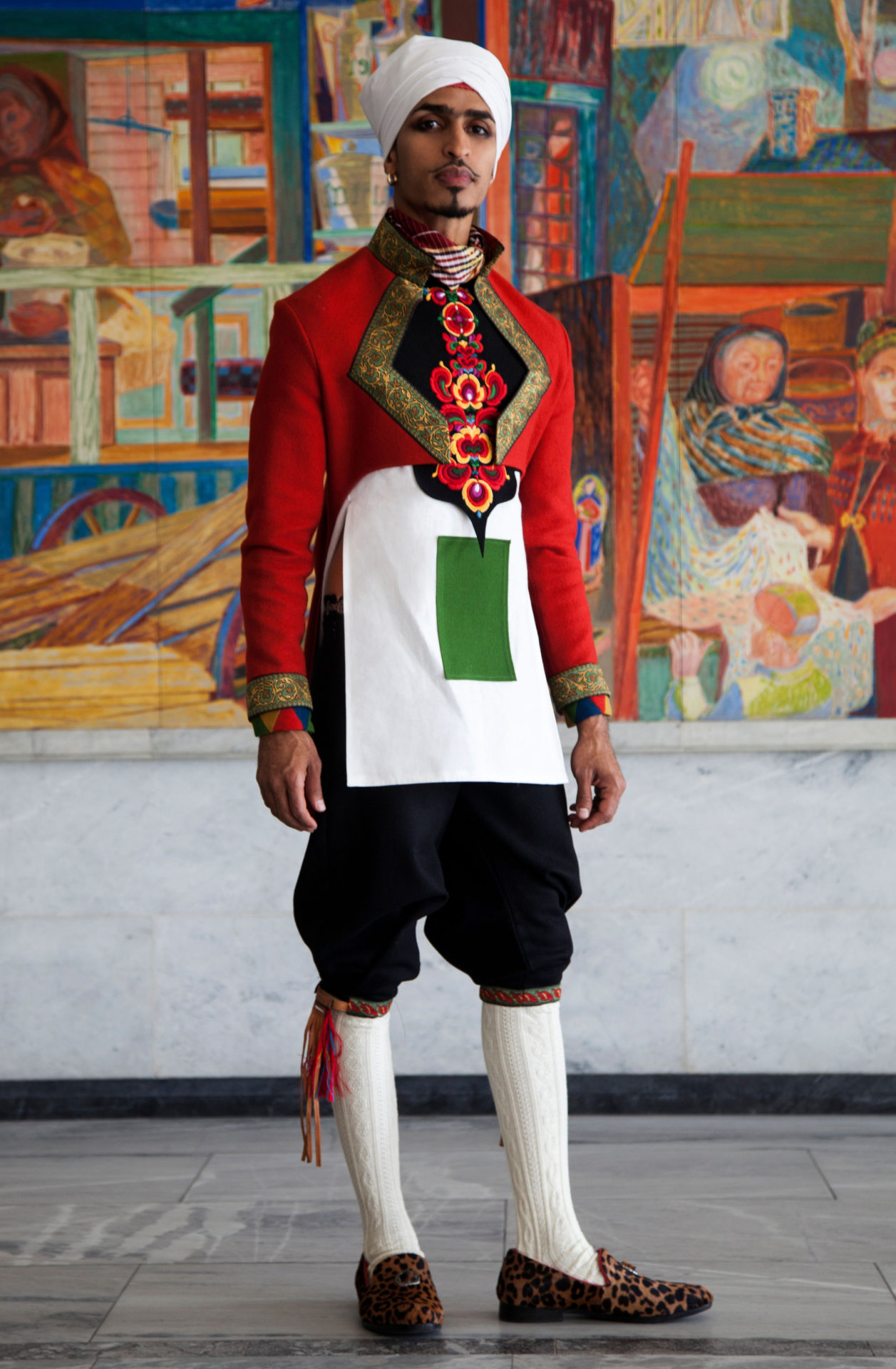
Identity-Embroidered
My physical appearance is an important part of my existence and my work as an artist and an individual who seeks change. Clothing is the shell that reflects who we are and what messages we convey to each other. It is also a powerful tool of unification, equally of division and judgment. As a descendant of a mixed-race background growing up and living between three contradicting cultures – the Saudi, the Sudanese and the Norwegian – I held a constant question about where I belonged. Not only by others who needed an explanation of my identity, but also from myself. Where do I belong? Who am I?
The answer I ended up with is that I actually don’t belong anywhere. My experiences attach me to times and places that had a significant impact on creating who I am today. These places and incidences are numerous, and I find it unjust to link my identity to a single definition. I am a man, a woman, Sudanese, Norwegian, a reluctant Saudi, an Osloer, Londoner, Parisianer, New Yorker and everything and everywhere that shaped my personality. What I wear communicates and enhances the aesthetics of all of these circumstances.
Still to this day, I am fascinated by the handicraft and idea behind the bunad – the traditional Norwegian costume. I find it interesting on multiple levels and it is also a beautiful manifestation of identity and belonging. I am intrigued by the discourse that occurs every time someone personalizes the so-called bunad tradition and saves it from uniformity by showing it as a fluid, organic, and developing manifestation of belonging.. I decided to take this step and create my own identity-shell in the form of a bunad that represents my experiences and my multiple layers of belonging. My inspiration was the Sudanese traditional costumes of the middle Sudan, the region my family comes from, and Hallingdal where I had a course in bunad traditions during my time at school. I took elements from costumes for both men and women and mashed them into something that suits my non-conforming nature. I believe clothes can be activated by those who wear them and not by manufacturers.
After attending the ceremony of receiving my Norwegian citizenship, for which I designed the bunad in 2018, the costume was transformed into a constant conversation-starter for friendly chats on the street on the 17th of May and on the social events I wear it for. It served also as a subject of conflict for members of society who think my body is not worthy of wearing what they can wear. The project has also drawn attention to the struggles of individuals and groups that face challenges to their identity, such as young people who feel constrained by the uniform Norwegian traditions as well as Sudanese youth whose identities expand beyond the Sudanese border.
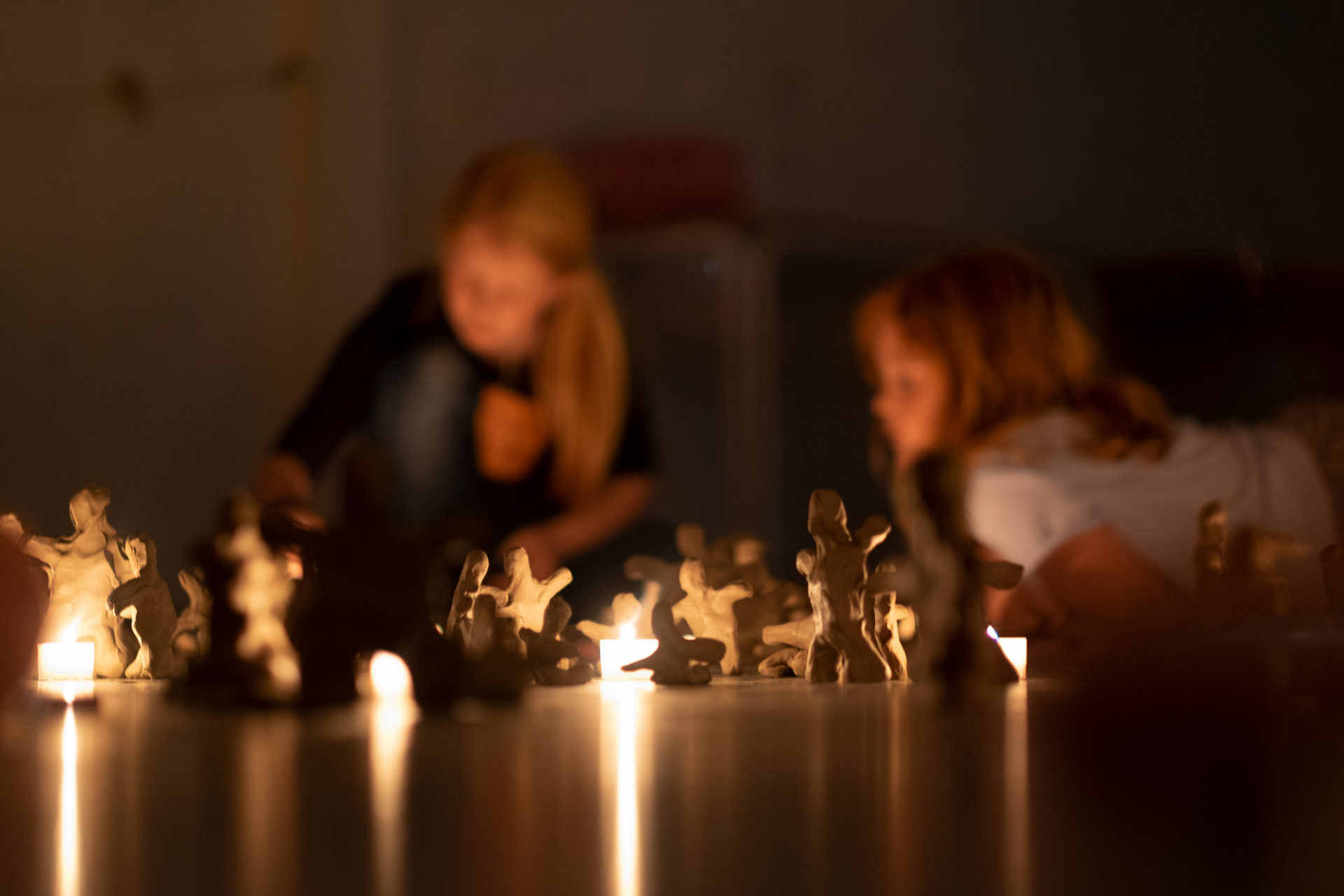
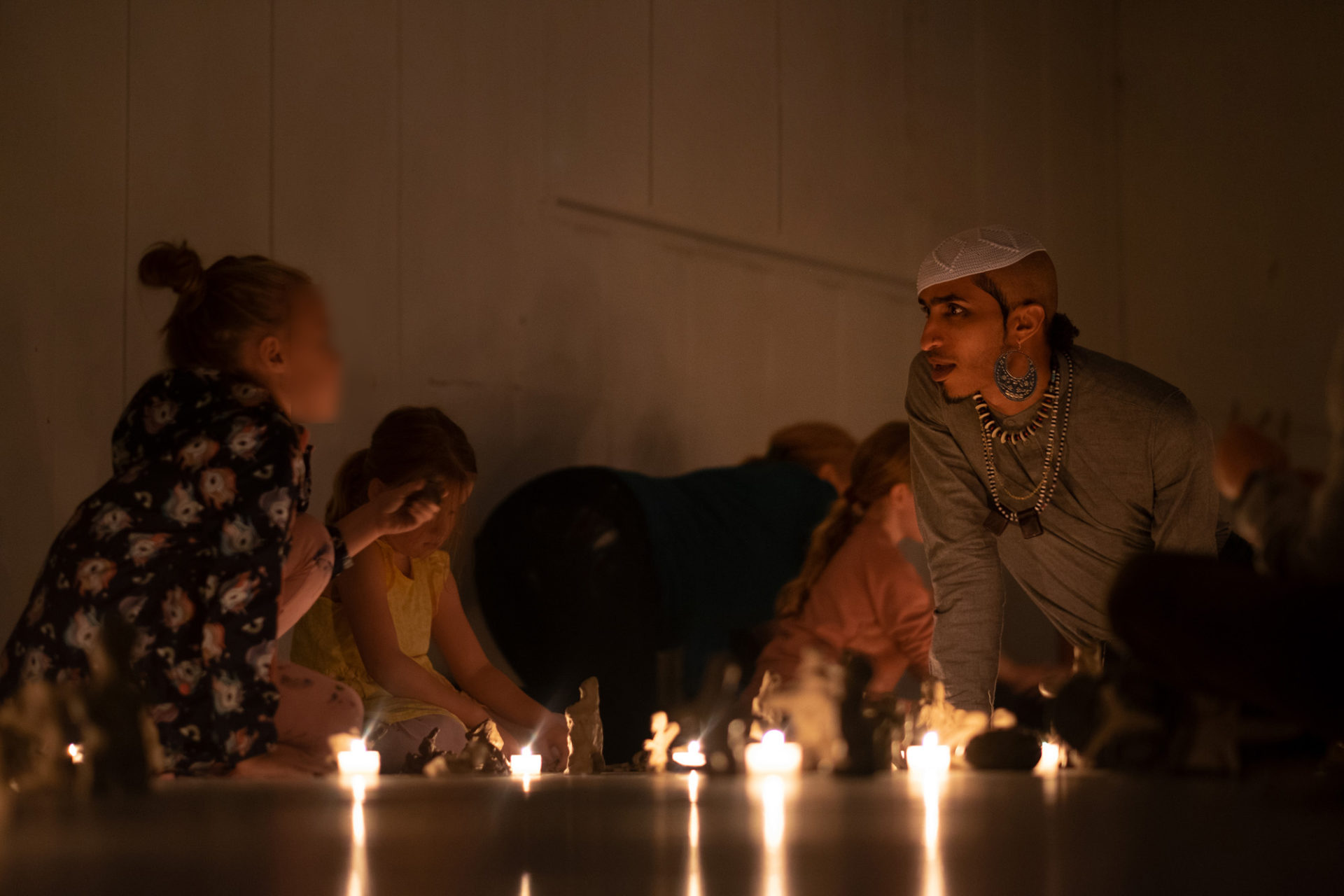
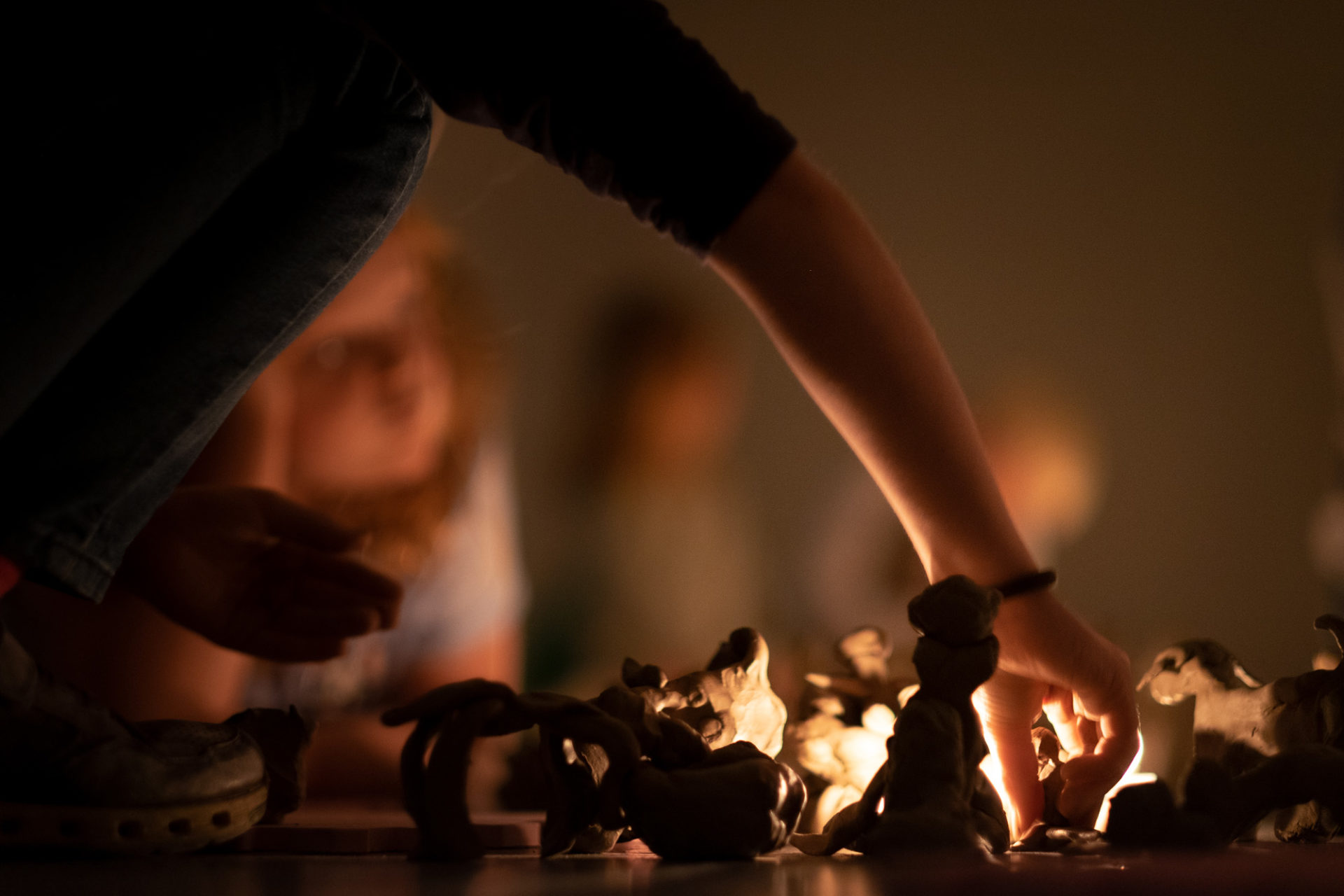
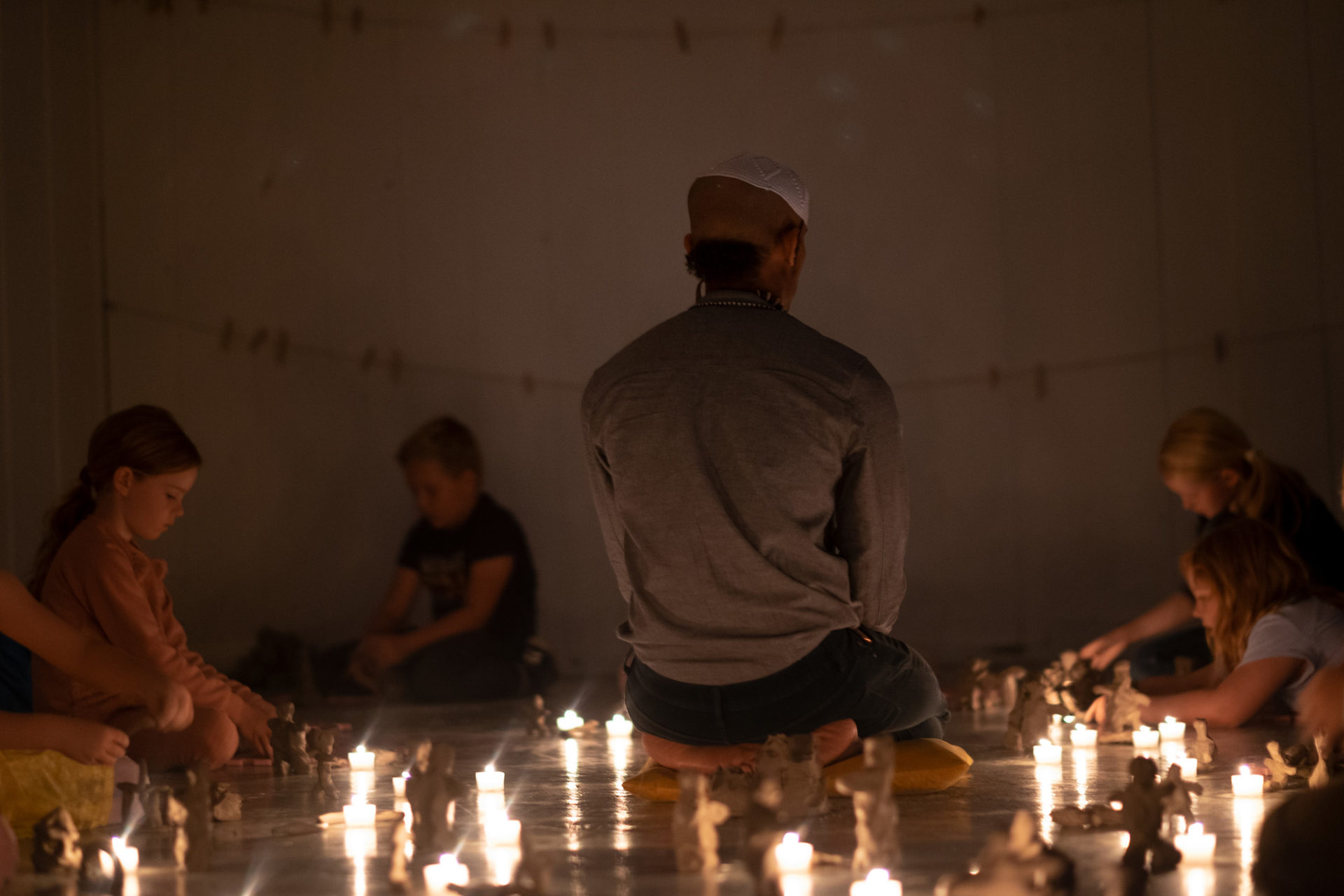
We are the creators of ourselves “If you no longer have a family, make your own with clay.”
“If you no longer have a family, make your own with clay” is a performance inspired by a Sudanese proverb. The proverb is used to console someone in the case of disappointment about family members or long-time friends. It can be interpreted as; a lump of clay is better than a flesh and blood human who hurt you. The performance was initiated by the reaction of some family members and friends to the leaked news about my sexuality that was hidden at the time. Suddenly, people started to leave my life, leaving a hurtful trace after them. Disappointing attitudes, hate and bullying were ongoing for a long period of time. I responded by counting all of the people who had caused me hurt and I made them with clay, as the proverb directs. It was a physical process that therapeutically helped in mending my hurt. I made 223 figures of the feelings I carried for those who have intoxicated my happiness throughout my life. I got rid of those feelings by manually processing them and then set the clay to be recycled. I believe that playing/working with clay is instinctive in every human being, as is the physical processing of strong emotions such as anger.
We all have a negatively influential person or two without whom our lives would be better. For this reason, I intentionally opened the performance for collective participation by setting clay ready for the audience’s use. I begin the performance with a short presentation on why I made this performance and how they can apply the proverb “If you no longer have a family, make your own with clay” to their own stories. Then we enter a dark room, lit with only tea lights in complete silence and sit around my performing place. Silence will follow us during the hour of performing so every member of the audience will be able to create their own meditative safe bubble. I sit in the middle and dive into my own past too.
I was invited to share this performance in various contexts, settings and countries around the world. It developed from being a personal process to an act dedicated to the audience and their experiences. Nine years after the first performance, the age-range of the attendees has largely expanded from adults to teenagers and finally to children as young as first graders, as in my experience with the Kids’ Art Club at Kunsthall Stavanger.
My first experience with younger people was with sixth, seventh and eighth graders in Ørland, Trøndelag where I was an artist-in-residence during the 2019 Hannah Ryggen Triennale. I initially hesitated when the idea of performing with children was brought to the table. I feared that the intensity of my story might cause some children to disengage with the performance. But luckily, I was proved wrong. One of the most heartening and emotional experiences in my art career was while performing with six-graders. They stayed until they were asked to leave to catch the last available school bus. A group of boys created a circle of figures holding hands around where I sat and told me before they left: “This is us protecting you.”
Through a total of eleven performances, I have personally observed younger people’s tendency to be in contact with their emotions more quickly and easily than adults, and yet still embrace playfulness. They are bolder in their approach to serious subjects and have with each performance shown a high degree of engagement and ability to use their raw explicitness in conveying their thoughts with clay, photography or painting. They depict stories that exceed adults’ expectations and go further to a deeper philosophical level. While performing with a mixed group of children between first and fifth grades in the Kids’ Art Club at Kunsthall Stavanger, a child made a fascinating clay installation and named it “A girl pressed by others around her”. It depicted a figure of a girl almost being crushed by a group of ten figures. What this kid wanted to communicate to us is of extreme importance. Another child took an isolated corner and made a number of significant people in their life, both positive and negative. Seeing them playing while at the same time speaking about their lives has proven to me the notion that children, despite of their young age, have a sense of in/justice and the capability of speaking out, when they are provided with the appropriate tools that suit their personal needs and abilities. And this time it was as simple as a lump of clay in the right atmosphere.
It is repeatedly said that art has the power to connect people to their inner emotions, reorganize their mental capacity and enables the analysis of past, future and current events. It builds bridges, strengthens areas of insecurity, and shapes the way we think, behave and belong. Speaking as an adult who lived years being voiceless, I stress the importance of adding art to the armory of self-development at a young age. It is therapeutic to unpack past and present events by establishing a healthy relationship to one’s own experiences. I believe the road towards a healthy society has no option but to pass through the territory of art.
Ahmed Umar (1988) is a cross-disciplinary artist who came to Norway in 2008 as a political refugee. His practice is strongly influenced by the themes of his upbringing and his experiences of living in a society structured around religion. His works recreate the narrative of his own life story utilizing various techniques such as sculpture, printmaking, painting and performance. In his attempt to resolve the contradictions of living in a distant and secular place, Umar mobilizes these methods to explore the complex relationship between identity, authority, sexuality, depression and art. His work is charged with social critique, a sense of directness, Arabic calligraphy and a hint of his Nubian visual heritage. They reflect his memories and signal a long process of self-understanding and acceptance.


